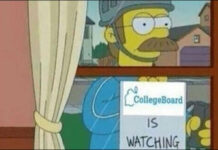By Ryan Chou
At over 1.7 million coronavirus cases as of May 30th, 2020, most of the country has started to reopen the economy after a multi-month long lockdown. It is important to note that it is almost impossible for everything to just go back to its old self within a few months, but the economy does appear to be taking the first steps of a lengthy road to recovery.
First and foremost is the panic buying. People across the country were fighting, in some cases literally, over products such as non-perishable foods and hand sanitizers. Stocks were running low and major food companies such as Tyson were warning that the food supply chain was starting to break down. Supplies started to run low because everyone was rush-buying everything. Because of that, prices started to soar in accordance with the laws of supply and demand. While purchases are generally still slightly above normal in areas such as groceries and produce at close to 20% since the start of the year, it is much better than the 40-80% abnormality compared to the start of the year when panic levels started to peak in the country.
Unlike the Spring Break time period this year, Memorial Day weekend seemed to spell out some good news for a few states. In areas such as Alabama, beach visits were as much as 71% higher than other years, likely generating a significant amount of revenue from this tourism.
Unemployment claims are down as well. After accumulating over 40 million unemployment claims since the start of this pandemic, the percentage of growth in the total number of unemployment claims is starting to decline. The weekly new number of unemployment claims of roughly 2 million is currently down 46% when you compare it to the peak in April.
But there are some new problems that are arising. This 22.8% real unemployment and 14.7% unemployment cannot become the new normal for the economy. To start to get this down, the people who still have their jobs need to gradually return to work. And then these people would need to start producing again so that the economy can grow and new jobs can be created again for the people who lost their jobs. The problem is that many workers do not want to go back to their jobs. Schools and preschools are still closed across the country, which means that their kids have nowhere to go: they need to stay home for their kids. Is the economy starting to reopen? Yes. But is the coronavirus all of a sudden no longer spreading? No. The rate of new cases is slowing down, but we are still finding well over 10,000 new cases per day, and that is scaring many people away from going back to work in locations where they may need to touch equipment or counters that dozens of people have touched in the same day.
And we might even be in worse shape right now than we think. For example, the initial estimates of the US GDP decline for the first quarter was about -4.8%. Since then, it has been revised down to -5.0%. So, maybe the unemployment rate is also worse right now than the 14.7% that we thought. Either way, we have lost a lot of economic progress that will need to be recovered.
The question is if the current improvements in the economy are here to stay. For all we know, it could just be a fluke and the upcoming May and June jobs reports could look even worse than the April jobs report, where 22.8 million jobs were lost. Hopefully the trend of recovery that we are on continues, but the only way to find out at this point is by waiting: only time will tell.










